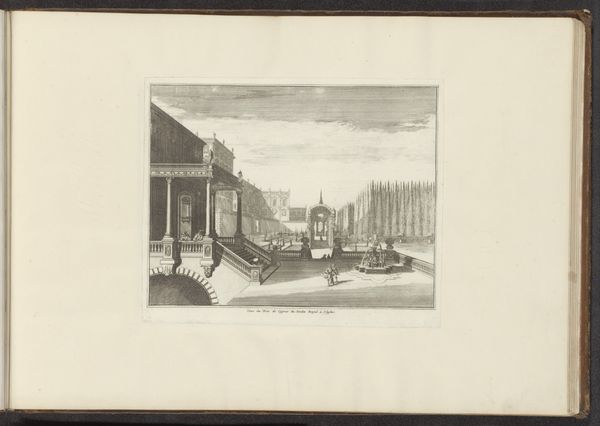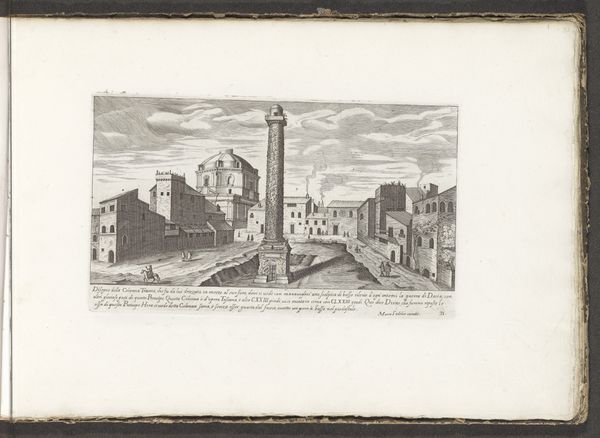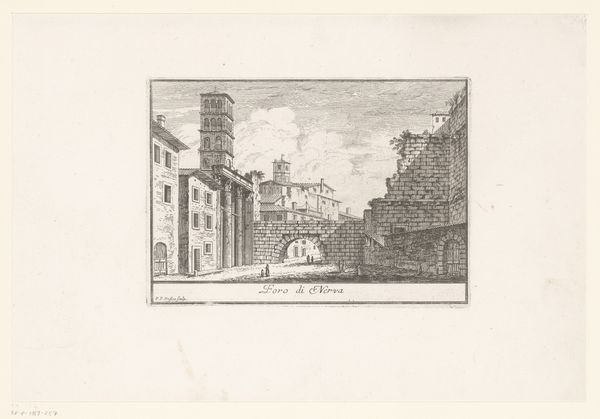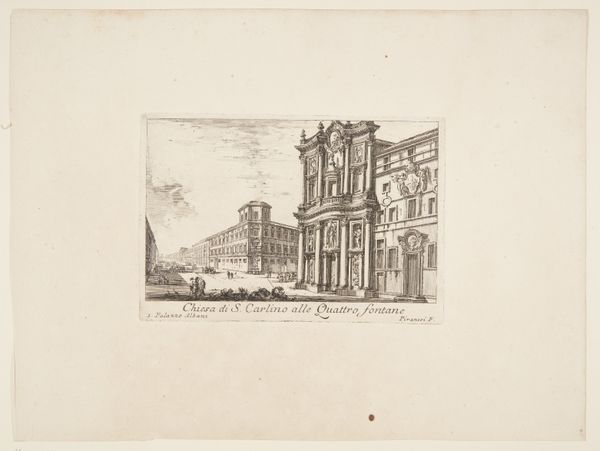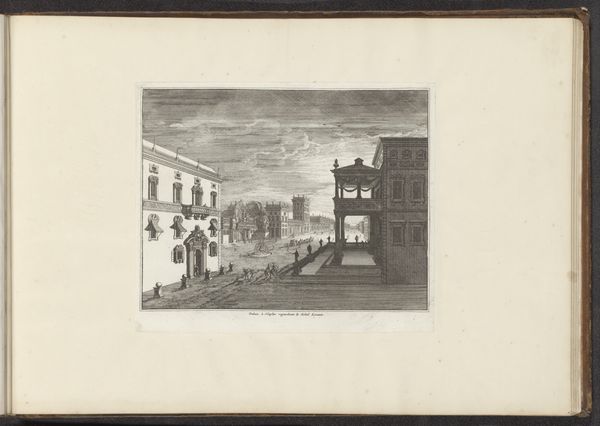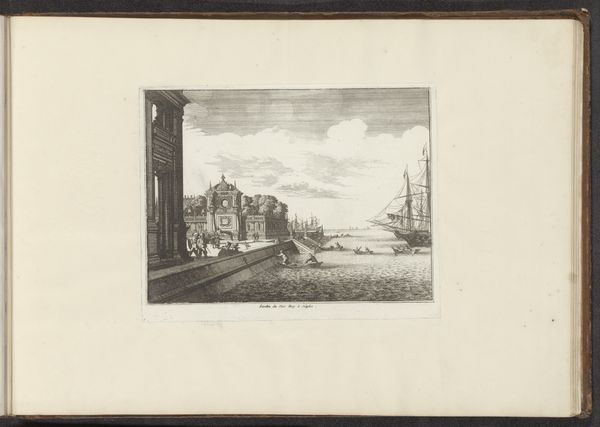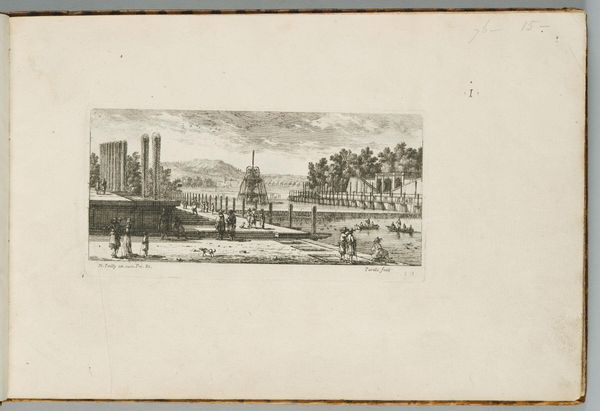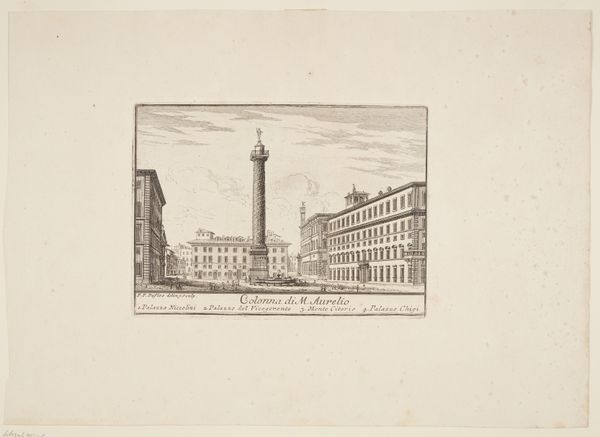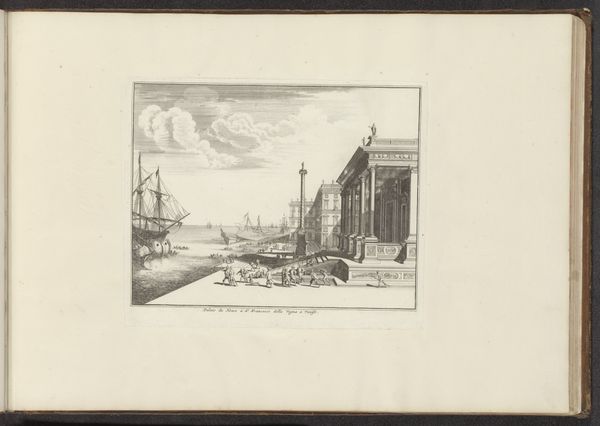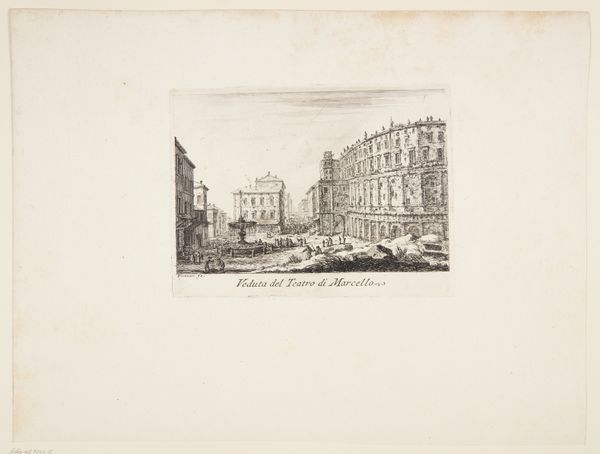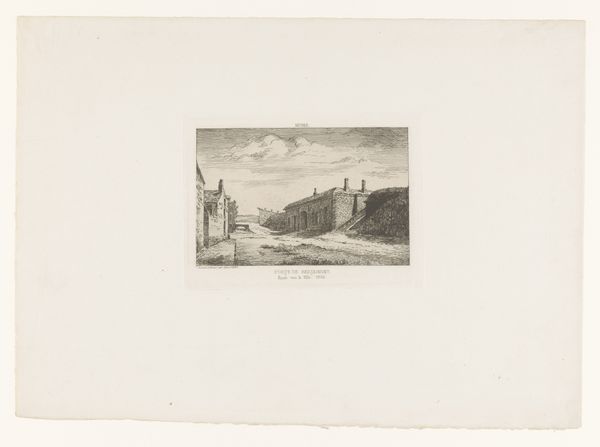
drawing, print, ink, engraving, architecture
#
drawing
#
baroque
#
ink paper printed
# print
#
perspective
#
ink
#
pen-ink sketch
#
cityscape
#
history-painting
#
engraving
#
architecture
#
realism
Dimensions: height 158 mm, width 269 mm
Copyright: Rijks Museum: Open Domain
Curator: This is a rather striking print from 1680 titled "Zuil van Marcus Aurelius met rechts de Tempel van Hadrianus," an architectural drawing rendered in ink. What’s your initial response? Editor: Stark, almost bleak. There’s an incredible emptiness despite all the architectural details—like a stage set stripped bare. The looming column hints at power, but what kind? It feels authoritarian, maybe? Curator: Let’s unpack that. Technically, note the precision in the lines depicting the Temple of Hadrian on the right. See how the artist uses linear perspective to create a sense of depth, drawing our eye towards the center? Also, there's an interplay between the geometric rigidity of the buildings and the more organic textures used for the sky. Editor: But that ‘emptiness’ is key. We have these imposing structures, signifiers of Roman power, rendered at a time of great upheaval and renegotiation of authority across Europe. That solitude invites questions. Who gets to write history? Who benefits from the legacies represented by these structures, when their historical weight seems so disconnected from the figures milling around? The smoke stacks also speak to something about what will become of Europe after the fall of the Roman Empire and even up to 1680, but its legacy endures through other empires. Curator: It’s true that the figures populating the scene appear rather small and inconsequential relative to the buildings, don't they? That could suggest a de-emphasis on individual agency, or perhaps, the artist wanted to play with relative scale. How does this work connect with artistic traditions that the average gallery visitor can grasp quickly? Editor: It also reflects anxieties surrounding urbanism itself, no? I imagine the plague would feel different in Rome versus how it was handled across many countries during those earlier centuries. Think of the visual vocabulary that speaks to power dynamics in spatial representation - like Piranesi’s later prison scenes. Curator: That comparison is thought-provoking. While structurally simpler, this work shares a certain unsettling quality. The precision juxtaposed with that hollowness... Editor: It leaves me contemplating who has the power to narrate urban history—to showcase certain monumental structures while erasing lived realities of the populace that inhabits and moves throughout the cityscape. Curator: A pertinent question. It appears there's still much more to unpack. Editor: Indeed. I think both approaches have illuminated the richness and the visual austerity that work together so beautifully in the print.
Comments
No comments
Be the first to comment and join the conversation on the ultimate creative platform.
